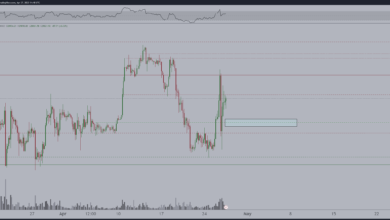
Bitcoin Price Drop Today 5 Shocking Reasons Behind the Crash
The cryptocurrency market has witnessed another dramatic downturn today, with Bitcoin price experiencing significant volatility that has left investors and traders scrambling for answers. As the world’s leading digital currency continues its turbulent journey, understanding the underlying factors behind these Bitcoin price drops has become more crucial than ever for both seasoned investors and newcomers to the crypto space.
Today’s Bitcoin crash represents more than just another market correction – it reflects a complex interplay of macroeconomic factors, regulatory pressures, and shifting investor sentiment that collectively shape the cryptocurrency market dynamics. The recent BTC price decline has triggered widespread concern across trading platforms, with Bitcoin volatility reaching levels that remind us of the asset’s inherently unpredictable nature.
Several interconnected elements have converged to create this perfect storm in the Bitcoin market. From institutional selling pressure to regulatory uncertainties, each factor contributes to the overall bearish sentiment currently dominating cryptocurrency trading. The digital asset ecosystem, once celebrated for its resilience during economic downturns, now finds itself grappling with challenges that extend far beyond traditional market forces.
The impact of today’s crypto market crash extends beyond immediate price movements, affecting everything from mining operations to decentralized finance protocols. As blockchain technology continues to mature, these market fluctuations serve as important lessons about the evolution of digital currencies and their role in the broader financial landscape. Understanding these underlying mechanisms becomes essential for anyone seeking to navigate the complex world of cryptocurrency investment.
This comprehensive analysis will explore the five most significant factors contributing to today’s Bitcoin price drop, providing insights that can help investors make informed decisions during these turbulent times in the crypto space.
1. Federal Reserve Interest Rate Policy and Economic Uncertainty
The Fed’s Monetary Policy Impact on Risk Assets
The Federal Reserve’s monetary policy decisions continue to exert tremendous influence over Bitcoin price movements, with today’s crash closely linked to evolving expectations about interest rate cuts. The market has struggled following its postelection gains, and now the bitcoin price has fallen as traders reevaluate the 2025 outlook for Federal Reserve interest rate cuts, according to recent market analysis.
When the Federal Reserve maintains or signals higher interest rates, traditional fixed-income securities become more attractive relative to volatile cryptocurrencies. This fundamental shift in investor sentiment drives capital away from digital assets like Bitcoin toward safer, yield-generating investments. The cryptocurrency market particularly suffers during periods of monetary tightening as investors seek refuge in more stable assets.
Inflation Concerns and Economic Data
Recent economic indicators have painted a picture of persistent inflation pressures, reducing the likelihood of aggressive Federal Reserve rate cuts that crypto investors had previously anticipated. Strong employment data, robust consumer spending, and sticky core inflation metrics have all contributed to a reassessment of the monetary policy outlook, directly impacting Bitcoin volatility.
The cryptocurrency ecosystem has historically benefited from loose monetary conditions, with low interest rates driving investors toward alternative assets in search of higher returns. However, the current economic environment presents a different challenge, where Bitcoin must compete with increasingly attractive traditional investment options offering guaranteed returns without the associated crypto market risks.
2. Institutional Selling Pressure and Whale Activity

Large-Scale Bitcoin Liquidations
Institutional Bitcoin liquidations have emerged as a primary driver behind today’s price decline, with crypto whales initiating substantial sell-offs that have overwhelmed market buying pressure. These large-volume transactions create cascading effects throughout the cryptocurrency trading ecosystem, triggering stop-loss orders and amplifying downward price momentum.
Bitcoin (BTC) fell below $113,000 for the first time in over two weeks, surprising traders and triggering the liquidation of $113 million in leveraged long positions. This massive liquidation event demonstrates how institutional trading decisions can rapidly reshape Bitcoin market dynamics, creating significant price volatility in short time frames.
Corporate Treasury Management and Profit-Taking
Many corporations that previously allocated treasury funds to Bitcoin are now reassessing their cryptocurrency positions amid changing market conditions and regulatory scrutiny. Corporate profit-taking activities, particularly from companies seeking to optimize their balance sheets ahead of quarterly earnings reports, have contributed to increased selling pressure in the Bitcoin market.
The concentration of Bitcoin holdings among institutional players means that relatively few large transactions can significantly impact the overall cryptocurrency market cap. When these institutions decide to reduce their digital asset exposure simultaneously, the resulting selling pressure often exceeds the market’s capacity to absorb, leading to sharp price corrections.
3. Regulatory Crackdowns and Government Policy Shifts
Global Regulatory Uncertainty
Cryptocurrency regulation remains a significant concern for Bitcoin investors, with governments worldwide implementing increasingly stringent policies governing digital asset trading and ownership. Recent regulatory announcements from major economies have created uncertainty about the future legal status of cryptocurrencies, contributing to today’s market selloff.
The evolving regulatory landscape affects not only individual crypto trading but also institutional adoption of Bitcoin as a legitimate asset class. When regulatory clarity remains elusive, many potential investors adopt a wait-and-see approach, reducing overall market demand and contributing to price volatility.
Banking Sector Restrictions and Compliance Issues
Traditional financial institutions continue to face regulatory pressure regarding their involvement with cryptocurrency services, leading to restricted access for retail and institutional Bitcoin investors. These banking limitations create friction in the crypto market ecosystem, making it more difficult for new capital to enter the space and supporting existing positions.
Compliance costs associated with cryptocurrency operations have also increased significantly, forcing some market participants to reconsider their involvement in Bitcoin trading. The cumulative effect of these regulatory pressures creates headwinds for cryptocurrency market growth and contributes to periods of sustained price decline.
4. Technical Analysis and Market Structure Breakdown
Critical Support Level Failures
From a technical analysis perspective, Bitcoin has broken through several crucial support levels that traders and algorithms monitor closely. These technical breakdowns often trigger automated selling programs and force leveraged traders to close positions, creating additional downward pressure on cryptocurrency prices.
Bitcoin’s four-year price cycle, which has often had a predictable pattern, has shown signs of breaking or even disappearing altogether. This disruption of historical Bitcoin price patterns has left many technical traders uncertain about traditional cryptocurrency analysis methods, contributing to increased market volatility.
Leverage Liquidations and Margin Calls
The cryptocurrency derivatives market plays a significant role in amplifying Bitcoin price movements, with high-leverage positions creating both upside and downside momentum. Today’s crash has been exacerbated by massive leverage liquidations, where traders using borrowed funds to amplify their positions are forced to sell when prices move against them.
Crypto exchanges have reported unusually high liquidation volumes, indicating that many traders were positioned for continued Bitcoin price appreciation rather than the dramatic decline witnessed today. This positioning imbalance has contributed to the severity of the market correction and the speed at which prices have fallen.
5. Global Economic Pressures and Geopolitical Tensions
Trade War Implications and Economic Uncertainty
Trump’s trade war, uncertainty of the Fed’s next step and a growing risk-off sentiment are taking a toll on Bitcoin price. Global trade tensions and economic uncertainty have created a risk-off environment where investors prefer traditional safe-haven assets over volatile cryptocurrencies like Bitcoin.
The interconnected nature of global financial markets means that cryptocurrency prices often reflect broader economic sentiment rather than Bitcoin-specific fundamentals. When geopolitical tensions escalate or trade relationships deteriorate, digital assets typically experience outflows as investors seek stability in more established markets.
Emerging Market Volatility and Capital Flight
Cryptocurrency markets have become increasingly correlated with traditional risk assets, particularly during periods of global economic stress. Emerging market volatility, currency devaluations, and capital flight patterns now significantly influence Bitcoin price movements, creating additional complexity for crypto investors.
Economic concerns, such as those in China’s property sector, have reinforced the perception of Bitcoin as a risk-on asset, susceptible to broader economic downturns. This correlation challenges the narrative of Bitcoin as a hedge against traditional financial market instability, instead positioning it as another risk asset vulnerable to global economic pressures.
The current economic environment, characterized by inflation concerns, supply chain disruptions, and geopolitical uncertainties, creates a challenging backdrop for cryptocurrency adoption and price stability. Bitcoin investors must now consider not only crypto-specific factors but also broader macroeconomic trends when making investment decisions.
Market Outlook and Recovery Potential

Short-Term Price Predictions and Technical Indicators
Despite today’s dramatic Bitcoin price drop, several cryptocurrency analysts remain cautiously optimistic about medium-term recovery prospects. Technical indicators suggest that Bitcoin may be approaching oversold conditions, potentially setting up for a relief rally if buying interest returns to the market.
However, the breakdown of traditional Bitcoin price cycles and increased correlation with traditional markets makes short-term predictions particularly challenging. Crypto traders should prepare for continued volatility while monitoring key support and resistance levels for signs of market stabilization.
Long-Term Adoption and Infrastructure Development
The fundamental blockchain technology underlying Bitcoin continues to evolve and improve, with ongoing developments in cryptocurrency infrastructure supporting long-term adoption prospects. Despite today’s market crash, the underlying technology remains sound, and institutional interest in digital assets continues to grow globally.
Cryptocurrency market maturation may actually benefit from periodic corrections that eliminate excess speculation and refocus attention on fundamental value propositions. Today’s Bitcoin price drop represents a natural part of the crypto market evolution rather than a fundamental rejection of digital currency technology.
Also Read: Bitcoin Price News Today Latest Market Analysis & Trading Updates August 2025
Conclusion
Today’s Bitcoin price drop results from a perfect storm of interconnected factors including Federal Reserve monetary policy shifts, institutional selling pressure, regulatory uncertainty, technical breakdown of key support levels, and broader global economic pressures. While the immediate cryptocurrency market outlook remains challenging, understanding these underlying dynamics helps investors navigate the complex Bitcoin trading environment.
The crypto market crash serves as a reminder that digital assets remain volatile investments requiring careful risk management, but the long-term potential of blockchain technology and cryptocurrency adoption continues to support the fundamental investment thesis for Bitcoin and the broader digital currency ecosystem.







